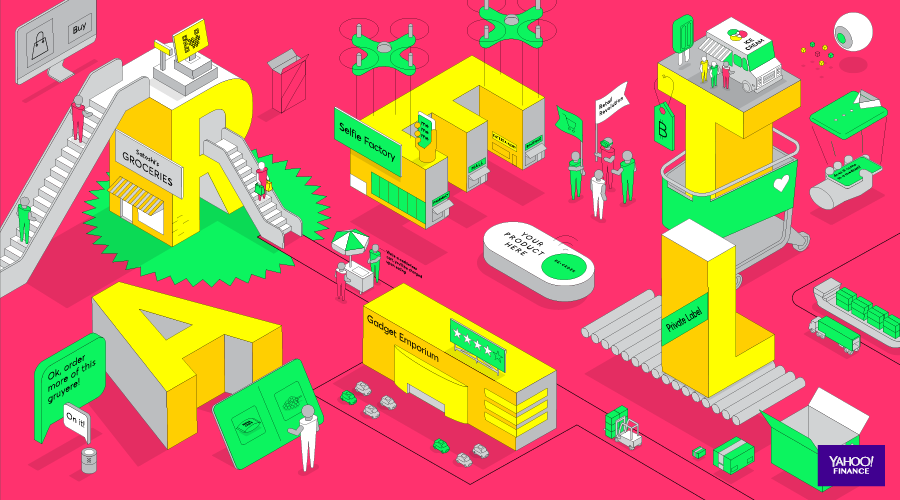Amazon Dash is the company ethos in a button
For ages, there was only a few ways to buy stuff. You could go to a store, or order from a catalog via phone, mail or online.
In the past few years, Amazon (AMZN), in its position as a global juggernaut of retail, has managed to single-handedly wrench open new windows through which to buy things.
So far, two of the most interesting windows have been its Alexa system, which allows ordering by voice, and the Amazon Dash button. Of the two, there’s little love for the Dash button. It doesn’t get Super Bowl ads and is generally relegated to order products “that aren’t necessarily fun to shop for,” as one Amazon spokesperson put it to Yahoo Finance.
But the Dash button, which launched in March 2015, may be the best literal representation of the company’s entire genius — it makes it possible to buy something with the push of one button.
“The true innovation was allowing someone to buy something with one click,” says Dean Seifert, director, Dash and Dash Replenishment Services at Amazon. “This is a physical representation of that same concept.”
Less and less friction
No one is talking about the Dash button, but people are using it to place orders, in the millions. “A dash button order is placed four times a minute,” said Seifert, who added that many customers have more than one, if they have any. (Dash buttons also exist virtually, on the Amazon website and mobile app.)
The stuff that people buy is the exact kind of stuff you’d think they buy, though there’s more than 500 buttons worldwide. Batteries, soap, laundry detergent are all amongst the top items that have a Dash button. But the most-pressed Dash button of all time, unexpectedly, is Smartwater. (Bounty, however, led 2018, according to Seifert.)
As mobile has become stronger and stronger — 46% of traffic and 29% of sales were made by mobile devices, according to Adobe Analytics — and Amazon Echos are popping up in more and more homes, it’s likely that this is eating some of the Dash button’s lunch. (“We’re not trying to compete. We just try to make sure the channels work well,” Seifert noted.)
The luster of the full-send one-touch physical button ordering system Amazon pioneered might not shine as brightly as it once did with the myriad of new ordering options, but it all appears to be part of Amazon 3D chess.
The endgame
Seifert is not just the head of Dash, but the head of Dash Replenishment Services, a part of Amazon that’s endgame is even more dominating than that of a one-touch ordering system, an integrated, or even zero-touch system.
The virtual version of a Dash button, thanks to the magic of APIs, can easily be linked to the device it works with — if there’s a device. The internet of things, filled with smart fridges and coffee makers may not yet be the standard, but should that be the future, the Dash product and the automatic replenishment is the logical step.
In this system, the milk is ordered automatically when the fridge says its low (or it asks you, depending on your preferences), and the washer orders detergent when it’s low, and so on.
Amazon isn’t the only one betting on this. Visa (V), for its part — and it’s a big portion of the payments landscape — has been looking at these types of internet of things payments as a part of the future, recently telling CNBC, “you may end up with four, five, six, eight places in your home where you could actually buy from.”
Amazon has already been making progress on this with new partners like Samsung and Whirlpool, which could have a Dash function built into their appliances. As a result it could become standard. For many people, however, it would solve a problem that doesn’t exist, and would fail to give consumers a good reason to spend extra money on additional “smart” features.
But for Amazon, that’s probably fine. With Dash buttons, Alexa, subscriptions, and more, there are plenty of other ways to make a sale.
Ethan Wolff-Mann is a senior writer at Yahoo Finance focusing on consumer issues, tech, and personal finance. Follow him on Twitter @ewolffmann.
This story is a part of Yahoo Finance Presents: The Retail Revolution, March 5-9, 2018.

